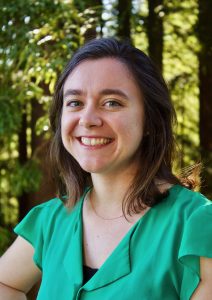Reconstructing Nitrogen Cycling and Ecosystem Structure in the Bering Sea Through the Anomalously Warm, High- Productivity, Hypoxic Bolling-Allerod Event
Abstract
During the most recent deglaciation, the North Pacific underwent a period of abrupt warming, coinciding with large phytoplankton blooms and hypoxic intermediate water. The cause of this event remains debated; both iron fertilization and dramatic shifts in vertical mixing have been hypothesized. I propose to test these hypotheses and investigate related marine biogeochemical feedbacks using high-resolution, laminated sediments from IODP U1340 in the Bering Sea. I will pair traditional proxies, including foraminifera δ18O and Mg/Ca and nutrient isotopes, with a novel proxy, compound-specific isotopes of amino acids (CSI-AA), to measure changes in nitrogen cycling and ecosystem structure associated with the shifts in climate regime.
Biography
I love science for the same reason I love art, poetry, and travel: because it opens our eyes to a new perspective with which to understand the world. Currently, I am learning how to see the world through the eyes of polar marine diatoms. I am earning my PhD at the University of California Santa Cruz, where I am working with Christina Ravelo and Matt McCarthy to investigate interactions between marine biogeochemical cycling and the climate system. My current research uses a variety of techniques including foraminifera δ18O, nitrogen and silicon isotopes, and diatom community composition to measure various physical, chemical, and ecological parameters of the ocean-climate system. My previous research at UNC-Chapel Hill and the University of New Hampshire includes marine microbial ecology, diatom physiology, and climate reconstruction. The Schlanger fellowship provides me with the opportunity to apply my multifaceted interests to pursue novel research in paleo-biogeochemistry.







